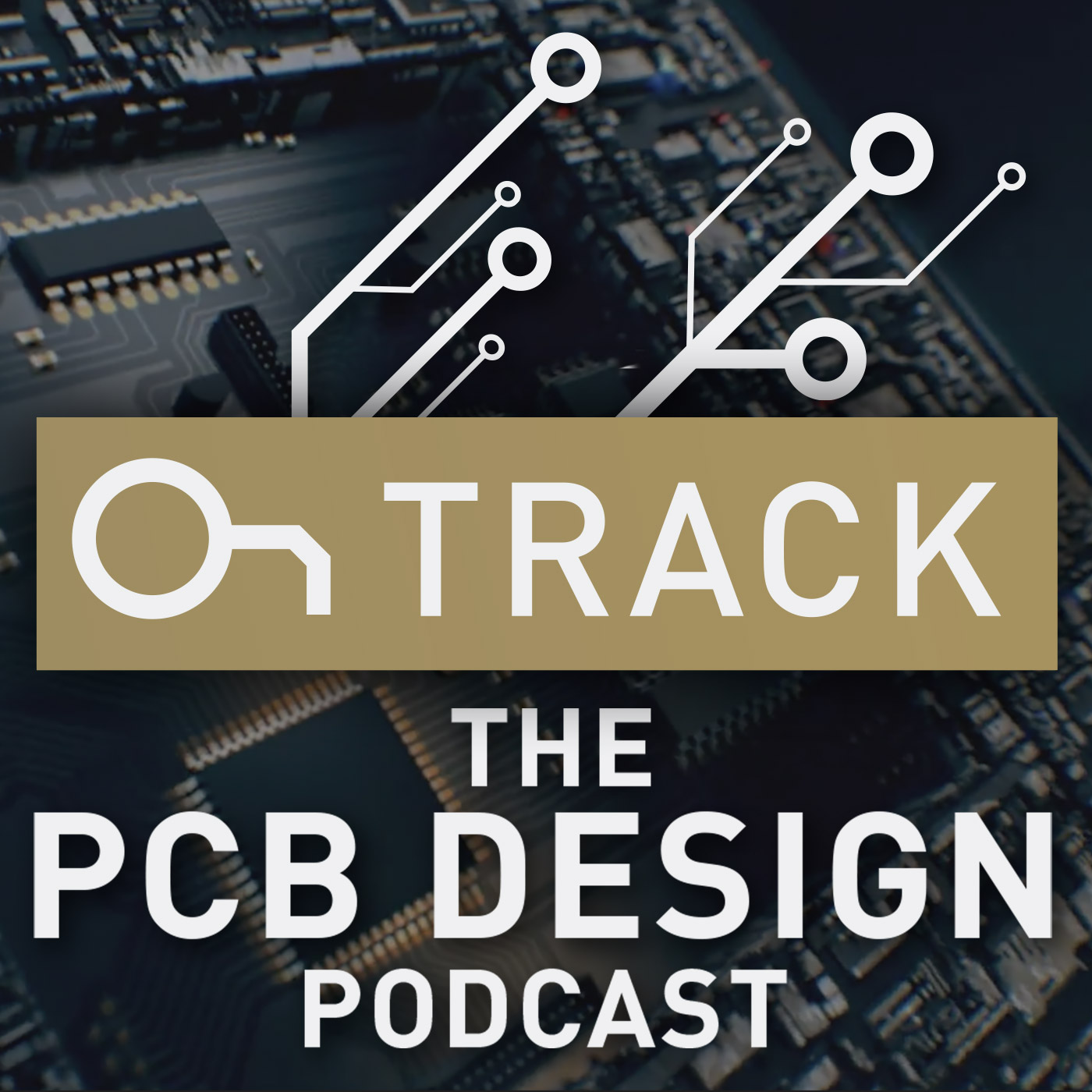Episodes
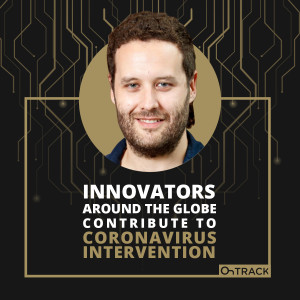
Tuesday May 19, 2020
Innovators Around the Globe Contribute to Coronavirus Intervention
Tuesday May 19, 2020
Tuesday May 19, 2020
Work from Anywhere. Connect with Anyone.
Colin Keogh PhD, CEO & Founder at The Rapid Foundation, has been on the front lines of the effort to combat ventilator shortages ever since a Facebook group called Open Source COVID-19 Medical Supplies (OSCMS) first presented the problem.
As cofounder of Open Source Ventilator (OSV) Ireland and a member of its core team, Colin offers his uniquely qualified perspective on open source innovation: its obstacles, its advantages, and its impact on world governments and regulatory bodies both now and in the future.
Show Highlights:
- Racing a pandemic: How Open Source Ventilator (OSV) Ireland turned a single Facebook post into an enterprise-scale organization composed of hundreds of engineers around the world.
- Silver linings in the time of COVID-19: evaluating the role of innovators in an epidemic, and how the lines separating government bodies and open source innovators become blurred in times of need.
- What young engineers are bringing to the table, and how the contributions of open-source innovators compare to that of Fortune 100 companies of today.
- ‘Fail fast and break things’ vs. the traditional approach to engineering: reconciling the two faces of modern innovation.
- Slack, Zoom, and Altium: the collaborative tools OSV Ireland used to produce solutions quickly while managing its unprecedented explosive growth.
- Welcome aboard; solutions are required: How OSV turned the usual medical design process on its head.
- ‘The provision of information is gonna be very important’: How the pandemic has affected the navigation of medical device regulation from country to country, and what innovators can expect from regulatory bodies in the future.
- How new revelations brought about by the pandemic will affect the interaction of medical device developers and regulatory bodies in the future.
- Colin’s delivers his unique perspective of the overall impact of COVID-19 on the world, and how engineers will use this experience to continue to overcome the obstacles ahead.
Links and Resources:
Colin Keogh on LinkedIn
Open Source Ventilator Website
OSV on Twitter
OSV on Linkedin
Fundraiser by Dugan Karnazes : Open Source Ventilator
Watch: Engineering Together to Save Lives
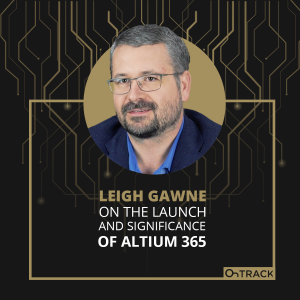
Sunday May 10, 2020
Leigh Gawne on the Launch and Significance of Altium 365
Sunday May 10, 2020
Sunday May 10, 2020
Work from Anywhere. Connect with Anyone.
Altium 365 is here, and its CAD-aware approach to cloud-based design is already cutting lead times down by orders of magnitude. How will this affect designers, and how will it affect the electronics industry as a whole? Leigh Gawne, Chief Software Architect at Altium 365, answers these questions and more. Get an exclusive look inside the impact Altium 365 is having on the electronics industry and learn more about this powerful new tool.
Show Highlights:
- Up until this point, ECAD has been confined to the desktop. Leigh explains how Altium 365 breaks this trend, allowing anyone with an internet-enabled device to interact and collaborate in the design process—directly from a web browser.
- No download necessary: Altium 365 ditches the software download for manufacturers and other stakeholders.
- Is the Google Drive comparison accurate? Leigh demonstrates how Altium 365’s approach to ‘CAD-awareness’ pushes its capabilities far beyond the reach of ordinary cloud-based design tools.
- Is this design manufacturable? Resolving essential questions with the click of a button in Altium 365, allowing designers to instantly share designs as a live view or as a snapshot.
- Never lose a comment thread again. Leigh explains how Altium 365’s ‘contextual commenting’ feature allows designers to attach comment threads right to relevant features in the design.
- Customers, procurement personnel, and project management: How Altium 365 facilitates seamless interaction with secondary stakeholders.
- Altium 365’s option for browser-driven design review minimizes mistakes and pulls more stakeholders into the chain.
- Supply chains are dynamic and are often subject to radical, unexpected changes, especially in a pandemic. Leigh breaks down Altium 365’s “baked-in” Octopart capability, which allows designers to monitor their supply chains in real-time.
- Navigating the ‘new normal’: Leigh examines Altium 365’s important and powerful role for product design in the post-coronavirus age.
- Out the door in 30 days: Reviewing Altium 365’s integral role in the Open Source Ventilator Project’s incredible success story.
- Success all around: How Altium 365 makes it trivial to duplicate another company’s achievements.
- Leigh looks at the future of the electronics in the wake of this powerful new tool.
Links and Resources:
Exclusive Sharable Listener Discount Link
Altium Designer-Altium 365
Altium 365 Customer Stories Videos: Skyship, Arduino, Project March
Altium 365 Webpage
Altium 365 LIVE Demo from AltiumLive 2019 with Leigh Gawne
Open Source Ventilator Podcast with Dugan Karnazes
Now you can get the ultimate PCB design productivity with the easiest platform for PCB design. Easily communicate design changes to your team with Altium 365.
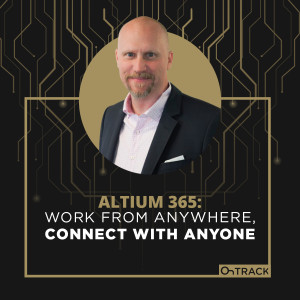
Tuesday May 05, 2020
Altium 365: Work from Anywhere, Connect with Anyone
Tuesday May 05, 2020
Tuesday May 05, 2020
Altium 365 has launched in the midst of a worldwide quarantine effort—a time when companies have drastically reduced the in-office workforce, and financial constraints and travel restrictions have never been tighter.
Altium’s VP of marketing, Lawrence Romine, joins the OnTrack Podcast to explain how Altium 365 removes the obstacles presented by the lockdown effort, why it’s the perfect tool for the post-coronavirus environment, and how the launch timing couldn’t be more serendipitous.
Work from Anywhere. Connect with Anyone.
Show Highlights:
- Altium 365 has launched on schedule; a brief look at why the timing couldn’t be more perfect.
- Working remotely. The Altium 365 cloud based platform which Altium Designer and Concord Pro run on.
- Seamless integration: the symbiotic relationship between Altium Designer and Altium 365.
- Arduino, SkyShips, and you: the various types of Altium 365 users, and how the addition of new features addresses their individual needs.
- Flattening the curve: Altium’s conscientious approach to the learning curve when adding new features.
- Design Reviews in a pandemic—a use case: How Altium 365 removes the obstacles presented by a remote work environment.
- Some users describe the experience of Altium 365’s cloud-based real-time collaboration as “similar to working in Google Docs”. Lawrence elaborates.
- It’s as easy as sending a link: How Altium 365 frees up budgets by eliminating excessive travel, phone calls, and emails.
- “Simplicity is the ultimate expression of sophistication”: Lawrence recalls an automotive experience from his life in praise of Altium 365’s design ethic.
- As simple as using a web browser: How sales personnel are utilizing Altium 365 as a demonstration tool for prospective clients.
- Lawrence’s predictions about the farside of the COVID-19 calamity.
Links and Resources:
Exclusive Sharable Listener Discount Link
Altium Designer-Altium 365
Altium 365 Customer Stories Videos: Skyship, Arduino, Project March
Altium 365 Webpage
AltiumLive: Altium 365
Altium 365 Security
Now you can get the ultimate PCB design productivity with the easiest platform for PCB design. Easily communicate design changes to your team with Altium 365.
Work from Anywhere. Connect with Anyone.

Tuesday Apr 28, 2020
Design Reliable Multiple Stack Microvias Like a Pro
Tuesday Apr 28, 2020
Tuesday Apr 28, 2020
Gerry Partida is a 36 year veteran of the PCB industry, and spent twenty of those years working in boardshops. He is currently a Senior Field Application Engineer for Summit Interconnect, where he and his colleagues have made a fascinating discovery about the reliability of multiple stacked microvias. Gerry and his team are still collecting data on this finding, but he joined us on OnTrack to share a firsthand account of what he knows!
Work from Anywhere. Connect with Anyone.
Show Highlights:
- Gerry shares his industry background and introduces Summit Interconnect, the second largest printed circuit board manufacturer in North America.
- What is a microvia? A manufacturer’s perspective.
- The first step is recognizing there’s a problem: a brief overview of the issue with multiple (more than two) stacked microvias.
- To boldly go where no one has gone before: In the absence of an IPC standard, Gerry shares the recommended distance between stacked microvia and mechanically drilled holes.
- Gerry’s advice on how to avoid overloading your designs.
- Gerry discusses IPC-6012E and the need for performance testing in the absence of adequate scopes (over 500x).
- OM testers: What are they, how prevalent are they, and how can they add value to your company?
- OM testing: Reflow simulation and thermal shock testing—its value and its scope.
Links and Resources:
Gerry Partida on LinkedIn
Summit Interconnect
IPC-6012E
Now you can get the ultimate PCB design productivity with the easiest platform for PCB design. Easily communicate design changes to your team with Altium 365.
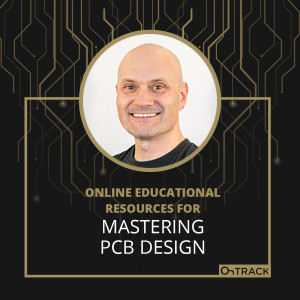
Monday Apr 20, 2020
Online Educational Resources for Mastering PCB Design
Monday Apr 20, 2020
Monday Apr 20, 2020
Ben Jordan drops in to share details on Altium’s central hub for online education resources: hands-on video, feature documentation, and tips and tricks for navigating and mastering Altium’s software. Ben is a Computer Systems and PCB Engineer with more than 20 years of embedded systems, FPGA and PCB design. See why we’re now calling him “the Dean of Altium Academy”. Here’s another podcast you can’t afford to miss!
Try Altium Designer 20 + Altium 365 Today
Show Highlights:
- Altium’s free webinar series: Why Altium is doubling down on webinars, where to find them, and how to use them to your advantage.
- Zig Ziglar and the secret of success.
- The Altium Academy YouTube channel: hands-on video, feature documentation, and tips and tricks for navigating Altium’s software.
- On providing an easy-to-find central information resource hub on the Altium domain—where your questions about all Altium products can be answered in detail.
- How the complexity of CAD software speaks to the nature of engineering work
- Ben offers users some insider info—a reason Altium users should check out Altium Academy’s YouTube Channel right now.
- Who is in charge of the public health? Ben offers an eye-opening perspective on the role of engineers in society.
- Ben discusses new challenges being faced during the Covid-19 epidemic.
- Judy revisits how Dugan Karnazes was able to coordinate a worldwide engineering team’s spin-up of an early Open Source Ventilator design within 24-hours.
- Ben describes his visit to General Atomics’ tokamak.
- The importance of staying connected: Ben and Judy offer closing statements and advice for all of us as we weather the Covid-19 crisis.
Links and Resources:
Ben Jordan on Linkedin
Altium Academy Virtual Sessions
jedec.org
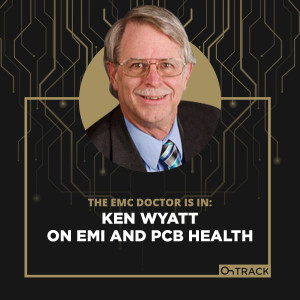
Tuesday Apr 14, 2020
The EMC Doctor is in: Ken Wyatt on EMI and PCB Health
Tuesday Apr 14, 2020
Tuesday Apr 14, 2020
The OnTrack Podcast is pleased to welcome Ken Wyatt (also known as the ‘EMC Doctor’). Ken began his career as a designer in the aerospace industry, and later worked for Hewlett Packard, where he found that his background in RF and Microwave engineering helped prepare him for his role as an Electromagnetic Compatibility (EMC) Engineer. His work has since taken him all over the world, where he develops and provides in-house training and delivers presentations and live demonstration; definitely unique among presenters!
Retiring early in 2008, Ken has since become a prolific author, co-authoring three books, including his latest, in which he identifies why products fail to meet EMI/EMC regulatory standards: ‘EMI Troubleshooting Cookbook for Product Designers’.
Ken currently provides seminars on a variety of EMC related topics—touching on subjects not often taught at the university level. He also provides EMC consultation, EMC compliance and precompliance testing, design reviews, and training services for commercial, military/aerospace, scientific, consumer, and computing industry sectors.
See What's New in Altium Designer
Show Highlights
- Ken lays out his career path, from his beginnings in the aerospace industry, to his current role as a consultant.
- ‘EMI Troubleshooting Cookbook for Product Designers’—a quick look at the book Ken co-authored with Patrick G. André.
- Addressing the prevailing trends in stackups and board design in general.
- Old habits die hard: Why the PCB is the heart of most EMI and EMC issues today, and pitfalls to avoid to move past these issues.
- Signals as the flow of electrons in copper traces and wires: How our education may have left out the whole story with respect to high frequency design.
- How simultaneous trends toward diminishing device size and the Internet of Things contributes to desensing and other issues on PCBs.
- Staying “in the know”: Keeping up with our evolving understanding of the physics of PC boards and signal propagation is always challenging. Ken lays out some ways designers can stay up to speed.
- Why Electromagnetic Compability programs at the university level are few and far between, and how Missouri University of Science and Technology stands out among them.
- Case Studies: The trouble with dog trackers and blood transfusion machines. Ken discusses some challenges he’s come across in the field.
Resources:
Short video on the book with co-author Patrick André
Ken Wyatt on Twitter: @emc_guru
See What's New in Altium Designer

Tuesday Apr 07, 2020
Open Source Ventilator Project (OSV) Combats Ventilator Shortage
Tuesday Apr 07, 2020
Tuesday Apr 07, 2020
The Novel Coronavirus (SARS-CoV-2) epidemic appears to be slowing in countries practicing social distancing measures, but we’re not out of the water yet. Serious medical equipment shortages continue to dog hospitals around the world, and officials are bracing for worst-case scenarios: medical triage.
Here’s how one entrepreneur channeled his concern for a high-risk family member into action, using his training and resources to aid the fight against equipment shortages. Dugan Karnazes, founder and CEO of Velocity Research, joined the Open Source Ventilator project (OSV), a world-wide effort to develop and design a simple, low-cost emergency-use ventilator to aid in the treatment of COVID-19 patients.
Karnazes joined Judy Warner on the OnTrack Podcast to discuss these efforts, and detailed how he and the OSV project were able to enlist the help of hundreds of engineers and medical professionals, as well as support from corporations like Ford, Worthington, CircuitHub, DigiKey, and Altium.
Show Highlights
- Dugan Karnazes discusses his background in Physics and Electrical Engineering and his career in R&D.
- A small team with a broad skill set: Dugan on starting Velocity Research, and the value building teams with diverse technical backgrounds.
- Dugan shares a personal account of how the threat of COVID-19 affects him, and how he turned heartbreak into motivation to join the front-lines in the fight against equipment shortages during the COVID-19 crisis.
- Open Source Ventilator project (OSV) and how it is addressing the worldwide ventilator shortage.
- How the Open Source Ventilator project (OSV) became a massive collective of worldwide contributors.
- Casting a wide net: How Dugan helped to draw in more than 800 engineers worldwide to offer their skills to the OSV project.
- Altium responds to the OSV project’s call.
- The Open Source Ventilator project turns to Altium 365: How Dugan leveraged Altium’s software to add hundreds of engineers to the Open Source Ventilator project, and went from having a need to having a distributed solution within 24 hours.
- Dugan explains how collaboration (and a bit of synchronicity) between Altium, Circuithub, Digi-Key, and Worthington helped reduce critical OSV development cycles from weeks to mere hours.
- Enter the medical professionals: Dugan’s contact at Spectrum Health Innovations sets up a team of pulmonary specialists, respiratory therapists, and other medical industry professionals to provide live feedback on OSV project developments.
- Ford Motor Company joins the fight—shares resources with the OSV project and commits to making 50,000 ventilators: How the automotive giant is leveraging existing hardware and supply chains to help the OSV project while developing their own ventilators.
- Dugan discloses the sobering prediction that Michigan was 5-10 days away from hitting capacity on ventilators, and details the horrifying medical triage decisions this would entail for medical professionals.
- Dugan shares diagrams and photographs of the OSV project’s ventilator prototype!
Fundraiser by Dugan Karnazes : Open Source Ventilator
Resources:
Look, the ventilator is coming together! Dugan shares 3D rendering and an actual photo.
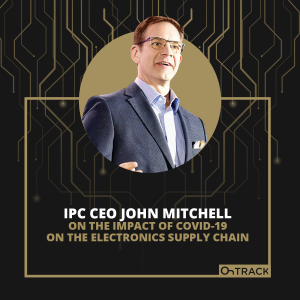
Tuesday Mar 31, 2020
IPC CEO John Mitchell on the Impact of COVID-19 on the Electronics Supply Chain
Tuesday Mar 31, 2020
Tuesday Mar 31, 2020
A $2 trillion coronavirus relief bill was signed into law on Wednesday, March 25th. The bill will, among other things, send money directly to American citizens, small businesses, and troubled corporations, all of which have been greatly affected by COVID-19 and the resulting lockdowns.
In this podcast, Dr. John Mitchell, president and CEO of the IPC trade association, discusses the effects of the SARS-CoV-2 crisis on the electronics industry, enumerates the IPC’s efforts at mitigating those effects around the world, and elaborates on IPC’s Roadmap to Economic Recovery.
The IPC has been helping the electronics industry navigate dramatic changes since 1957. Here, Dr. Mitchell demonstrates why the current coronavirus pandemic is no different.
Show Highlights
- Dr. John Mitchell provides a brief description of the trade association known as IPC, and elaborates on its role in ensuring the collective success of the electronics industry as a whole, both in the past and during the current COVID-19 crisis.
- IPC’s relationships with world governments, and its advocacy efforts since the advent of the COVID-19 epidemic.
- John delivers some encouraging news out of China.
- Manufacturers have stepped up to address the pressing need for ventilators and masks: how IPC works with government to direct those efforts.
- Coronavirus, the $2 trillion stimulus package, and IPC’s Roadmap to Economic Recovery.
- Have manufacturing jobs returned to the U.S.? How recent U.S. tariff restrictions have affected the electronics industry and the world.
- Your work is essential: Shelter-in-Place orders and IPC’s response.
- A quick rundown of IPC’s ‘COVID-19 (Coronavirus): Economic Impact on Electronics Manufacturing Industry Webinar’.
- Online ‘Live Training’ and the advent of virtual-proctoring: John reveals how COVID-19 is affecting IPC’s online education and training, and what the organization has done to adapt.
- How the shutdown has hastened progression toward industry standards.
Resources:
IPC Coronavirus Updates - New info added daily
IPC Online Learning in PCB Design
IPC Global Advocacy Update Reports
See What's New in Altium Designer

Tuesday Mar 24, 2020
Connectors for High-Speed Applications with Jason Ellison
Tuesday Mar 24, 2020
Tuesday Mar 24, 2020
Jason Ellison is a Signal Integrity Engineer and graduated from Penn State University with a Master’s of Science in Electrical Engineering. He currently develops high-speed interconnects, and calibration and automation technology for Amphenol out of Dillsburg, Pennsylvania. Jason has also written a number of articles for Altium’s PCB Design Blog and is a DesignCon technical program committee member, as well as an active IEEE member.
Show Highlights
- Form, Fit and Function: Jason expands on the demands driving connector technology relative to high speed.
- With regard to signal integrity, connectors have their own issues—reflection, insertion loss etc. Jason reviews the challenges these constraints introduce at the board level, and tells us how to deal with them.
- Why you should let the PCB houses tell you what you need to do to make your board work, instead of vice versa.
- The importance of knowing what your PCB houses are capable of.
- Recurring issues in Signal Integrity and how to mitigate them.
- Jason shares details of his secret weapon for generating consistently correct results for differential impedance calculations.
- As chips become more dense, it’s becoming increasingly difficult to manage crosstalk—and lowering density is not an option! But there’s hope… Jason drops some advice on how to get the greatest amount of added signal at the lowest cost.
- Designers After Hours: Jason surprises us by recalling the precise moment he decided to become an electrical engineer, and tells us a little bit about his hilarious hobby.
Resources:
Jason Tricks of the Trade Article
PCB Handbook
Jason Ellison’s Blogs
Jason Ellison on LinkedIn
See What's New in Altium Designer

Wednesday Mar 18, 2020
COVID-19 Electronics Global Industry Update with Mike Buetow
Wednesday Mar 18, 2020
Wednesday Mar 18, 2020
COVID-19 has impacted daily life and supply chains. Here we bring to you the latest information to help you prepare the best possible response during this unprecedented time. As an electronics industry veteran, Mike Buetow, Vice President and Editor in Chief at PCD&F Circuits Assembly, is uniquely qualified to provide context on the COVID-19 crisis─because he also studied epidemiology. Learn how the electronics industry and supply chains are responding to the coronavirus quarantine, and how this will affect the electronics industry at large in this global industry update.
Click here to watch the video.
Show Highlights
- An Electronics Industry ‘State of the Union’: Mike analyzes emerging trends over the last four weeks, and offers his best forecast for how the industry will be affected by COVID-19.
- A quick breakdown of coronavirus mitigation techniques major companies are using.
- Trade Associations (e.g., IPC, SMTA, TCPA, IEEE) and their strategies for buffering against the effects of COVID-19.
- The impact of the COVID-19 travel restrictions and shut-downs on designers and OEMs.
- When some work can’t be done remotely: CDC recommendations against gatherings, and how EMS companies and fabricators are handling it.
- Mike responds to questions and comments from industry insiders.
- How will the coronavirus impact the industry’s dependence on China?
- Have we gotten better at weathering supply shortages? Comparative responses to electronics shortages and what we can expect from ripples in the supply chain due to COVID-19.
- ”You can’t close your borders to a disease...” Mike speaks from his background as a former student of epidemiology.
- Stress test! How 2020 will prove or disprove the effectiveness of the EMS industry’s supply chain.
- Will the COVID-19 quarantine amplify trends toward telecommuting?
Links and Resources
Twitter @mikeBuetow
Mike Buetow on Linkedin
Printed Circuit Design and Fab
Circuits Assembly website
OnTrack Podcast: Mike Buetow on PCB West

Tuesday Mar 10, 2020
How to Panelize Your PCB Design with EMS Expert Kelly Dack
Tuesday Mar 10, 2020
Tuesday Mar 10, 2020
The Ontrack Podcast welcomes Kelly Dack, PCB Designer and Manufacturing Liaison at Keytronic Electrical and Electronic Manufacturing out of Spokane Valley, Washington. Kelly is a veteran PCB designer with the unusual distinction of having worked alongside both PCB fabricators and assemblers. Kelly shares his insider perspectives on copper pullback and panelization, dimensioning and tolerances, and more.
Click here, to watch the video.
Show Highlights
- Designer disconnects: the differences between what designers are laying out in their CAD tool and what then happens during fab and assembly.
- What is a PCB Outline? Kelly breaks out an assembly array while defining his terms.
- “Just don’t do it!”—a quick tip for designers about breaking boards by hand, which puts torque or stress on components on the board.
- Kelly provides an in-depth discussion of ‘copper pullback’, relative to IPC-2221 and IPC-2222.
- Jumping into the topic of ‘Inspection, Dimensioning, and Tolerances’, Kelly and Judy discuss the intricacies of IPC-2615.
- Reasons you should choose through-holes as your board’s point of origin.
- Designing for the widest tolerance range is a really good thing for designers to consider. Kelly does a quick dive into the subject of tolerancing, holes and the utility of remembering that holes are simply board edges.
- Routing vs. V-scoring: picking the appropriate tooling for your tolerances, volume, and your budget.
- Kelly goes full “Prairie Home Companion”, breaks out his acoustic guitar, and sings in a pitch only PCB Designers can hear—metaphorically speaking, of course. Don’t miss this rare treat!
Resources:
Kelly Dack’s Slides
Kelly Dack on Linkedin
IPC-2221
IPC-2222
Altium IPC APEX Expo Recap Video
Podcast with Kelly Dack: What is PCB Design
Eptac, IPC CID and CID+ PCB Designer Certification classes
See What's New in Altium Designer

Tuesday Feb 25, 2020
Out of This World Science with Zaheer Ali of NASA's SOFIA
Tuesday Feb 25, 2020
Tuesday Feb 25, 2020
The OnTrack Podcast welcomes Zaheer Ali, manager of safety, quality, and software product assurance for NASA’s Stratospheric Observatory for Infrared Astronomy (SOFIA). Zaheer is a research physicist specializing in electron transport and nuclear radiation detection and has a background as a MEMS engineer. He co-founded the National Center for Nuclear Security while working at the US Department of Energy’s Nevada Test Site. Zaheer shares his wealth of experience with our listeners and offers some sage advice to Electrical Engineers as we move toward a more modular, degradable, interconnected world.
Click here, to watch the video.
Show Highlights
- Zaheer Abbas Ali is a research physicist by education and training, specializing in electron transport and nuclear radiation detection, but while pursuing his education, he also took a tremendous number of Electrical and Nuclear Engineering classes.
- Zaheer has over 10,000 hours "in the fab" and spent part of his career consulting as a micro/nano device (MEMS) engineer.
- While working for the US Department of Energy’s Nevada Test Site, Zaheer co-founded the National Center for Nuclear Security.
- Zaheer also worked a two year assignment as Principal Investigator and Shot Director at the Laboratory for Laser Energetics of the University of Rochester.
- Zaheer currently works as the Product Assurance Manager for SOFIA, the Stratospheric Observatory for Infrared Astronomy, a project made possible through NASA’s partnership with the German Aerospace Center (also known as Deutsches Zentrum für Luft, or DLR).
- We know what SOFIA stands for, but what is SOFIA exactly?
SOFIA is a modified Boeing 747SP aircraft which carries a reflecting telescope into the stratosphere at 38,000-45,000 feet, putting is above the vast majority of our planet’s infrared-blocking atmosphere. This provides a means for astronomers to study our skies in ways that are simply not possible using ground-based telescopes. - SOFIA’s ability to fly above the troposphere, gives it access to a vew which is unobstructed by water and aerosols, so transmission is 99.99%!
- Zaheer also works with USRA (University Space Research Association), the subcontractor to NASA AMES Research Center, which is located in Mountain View, California.
- At DesignCon, Zaheer’s discussion focused on his colleague’s work on SOFIA, in a talk titled ‘Microships in Space: How Device Design Enables Amazing Astronomy’.
- Zaheer also served on a panel at DesignCon, discussing ‘How Device Design can Drive Progress in Industry 4.0’.
- Zaheer’s advice to EEs is to, moving forward, focus on modularity and upgradeability on the hardware side—these are critical for the longevity of systems and capabilities, and he believes demand for these features from commercial and consumer spaces will only increase as time goes on.
- Zaheer also notes the additional trend in which the number of IoT devices an average person interacts with on a daily basis will increase by an order of magnitude over the next 5-10 years, placing a huge emphasis on board and device design for IoT.
Resources:
Zaheer Linkedin
www.SOFIA.usra.edu
Helium Hydride SOFIA
SOFIA reveals new view of Milky Way
www.AixiaGlobal.com
www.llnl.gov
www.dhs.gov
NASA Spinoff
Article featuring Orbit Fab’s Space Gas Station
In God we trust, Everyone else, bring data.
See What's New in Altium Designer
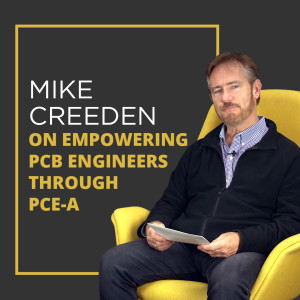
Tuesday Feb 18, 2020
Mike Creeden on Empowering PCB Engineers through PCE-A
Tuesday Feb 18, 2020
Tuesday Feb 18, 2020
Mike Creeden joins the OnTrack Podcast to discuss his newly launched non-profit organization, the Printed Circuit Engineering Association (PCE-A), whose mission is “to empower you, the Printed Circuit Engineering Professional”. Mike is a board designer who began his career working in the automotive industry, and has since, in addition to maintaining a lucrative career, served on the IPC Designer’s Council. Join us and learn more about this organization for PCB designers.
Show Highlights:
- Mike began his career in the Midwest, designing boards for the automotive industry. He became an officer of the local chapter of the IPC Designer’s Council, serving as a Communications and Education Officer, and eventually started his own Design Service Center, which offered a more well-rounded experience than he felt he could get working for CAD vendors and designing products for OEMs over the years.
- Since selling his Design Service Center business, he’s been working with EPTAC and IPC as a CID Instructor, teaching CID and CID+, and is currently designated a Master IPC Instructor.
- Mike has donated nearly a thousand hours to the collective EPTAC effort, part of which includes the task of rewriting the CID+ training manual!
- Within the last year, Mike has also taken a position as a Technical Director of Design Education with Insulectro, North America’s leading Isola and Dupont distributor.
- “IPC is an Us, not a Them”: So, if you know your craft, you’re more than welcome to join!
- At the start of 2020, Mike launched a new design organization called PCE-A—Printed Circuit Engineering Association—in response to the dissolution of the IPC Designer’s Council. Printed Circuit Engineering Association will be a non-profit, 501C6-type organization that is free to join, and their affiliated groups will be, for example, PCE-OC for Orange County, or PCE-SD, or PCE-RTC (the research triangle).
- The purpose of the PCEA is to empower you, the Printed Circuit Engineering Professional, to improve your career and truly bring value to your company - there’s nothing to be sold here!
- Visit PCE-A.org for more information
Links and Resources:
IPC APEX 2020 Highlights
IPC APEX Expo 2021
IPC Designer Certification Program
PCB Design Certifications and Learning Programs with Ben Jordan
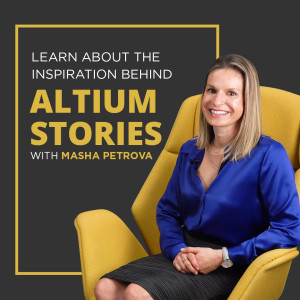
Tuesday Feb 11, 2020
Learn About the Inspiration Behind Altium Stories with Masha Petrova
Tuesday Feb 11, 2020
Tuesday Feb 11, 2020
Dr. Masha Petrova is on the show to discuss the launch of a mini-documentary series called Altium Stories. Altium Stories is a brand new YouTube series which highlights today’s innovators and designers; people who are out there making astonishing, cutting-edge technology that will impact our world in significant ways. Before becoming Vice President of Brand Marketing at Altium, Masha earned a PhD in Aerospace Engineering from the University of California San Diego. Meet Masha Petrova, one of the people at the helm of the new mini-documentary series Altium Stories and learn more about her personal story.
Show Highlights:
- Masha grew up in Moscow, Russia, before the dissolution of the Soviet Union. Her mother was a doctor and her father was a Chemist. But maybe even more notable, given Masha’s background, her grandfather was an Aerospace Engineer during the Space Race between the Soviet Union and the United States, and he was even involved in developing the orbit for Sputnik: Earth’s very first artificial satellite.
- Sputnik’s resounding success triggered the Space Race, which inspired the formation of NASA less than a year later.
- During the Soviet era, Russian Science Fiction had reached new literary heights and was in its ‘Golden Age’. Masha notes that she was a major fan of the genre, and that Science Fiction even influenced her decision to become an Aerospace Engineer: “There were no computers, no iPads when I was growing up—no food half the time really—so there was a lot of reading that I could do… and I decided when I was six, that I was going to be an Astronaut or Cosmonaut and then move here [to the United States].”
- Masha earned a PhD in Aerospace Engineering from the University of California San Diego.
- Regarding her move from engineering to marketing, Masha elaborates, providing a unique insight into what unites the seemingly disparate fields, and why she finds it challenging.
- Altium has just launched a new YouTube channel called ‘Altium Stories’, which is specifically dedicated to telling the stories of Altium’s users and customers, showcasing their innovations and contributions in mini-documentary format.
- While meant for industry professionals—engineers, designers, etc.—Altium Stories are family-friendly, and Masha says they’ve even served as inspiration for her own kids.
- Currently featured on Altium Stories are mini-docs from companies like Core Wellness, which designs technology around meditation—a haptic feedback device which can sense your electrocardiogram through your thumbs, and provide information about changes in your autonomic nervous system while you meditate. And VPI Technology Group, a Salt Lake City-based company which designs a small form-factor radiation detection device used by public safety and law enforcement agencies. We also hear from VOX Amplification Ltd., maker of VOX amplifiers, a mainstay in the Beatles’ music equipment. Not only is there more, but there’ll be more mini-documentaries added every month. The next innovative technology featured on the series could be your own!
- If you’re an Altium customer who would like to be featured in Altium Stories, please reach out! Share your story, showcase your projects, or get your product out there. Masha can be contacted directly at Masha.Petrova (at) altium.com.
Links and Resources:
Altium Stories Youtube Channel
Houston Mechatronics Aquanaut - Underwater Robot
Masha Petrova on LinkedIn
Confessions of a Hacker, Joe Grand
See What's New in Altium Designer
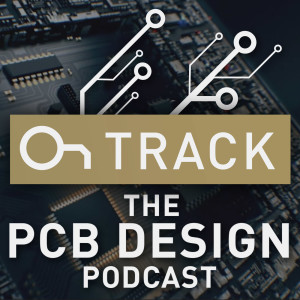
Tuesday Jan 28, 2020
Steve Sandler from Space Shuttle to Power Integrity Bootcamp at DesignCon 2020
Tuesday Jan 28, 2020
Tuesday Jan 28, 2020
See What's New in Altium Designer
Show Highlights:
- Steve will do several talks at DesignCon this year, including a full-day ‘Power Integrity Bootcamp.’ This year’s Bootcamp will be very exciting—Keysight will provide ADS’ for everyone to have live simulation in the room!
- Steve’s session on Measuring Oscilloscope Voltage Probe Performance will include a demonstration of Picotests’ Gallium nitride probe calibrator, as well as two ways to accurately measure scope probes.
- Steve will also be involved in two sessions for the youngsters: ‘How to Jumpstart your Career’, and he’ll also sit on the ‘Stump the Experts Panel’.
- Changes in the industry have been dramatic over the years—these days it’s all about PCB effects. The biggest impact is in automotive. Boards are very complicated, and engineers are overloaded; they want answers, and the answers are coming. To that end, we discuss why Steve is excited to be part of an upcoming solution for the future.
- Today, everything is interconnected; yet most simulators don’t include a voltage regulator module, even though that’s the largest source of jitter! In the future, everything will be simulated end-to-end.
- Engineers today also struggle with lowering power supply noise, and voltage regulation is not the answer.
- Engineers have become too myopic and need to look at their work more holistically. They often don’t understand how their work impacts everyone else.
- Power Engineers are the foundation of noise issues.
- Low frequency is more problematic than high frequency. Noise travels very far, and once you create it, it can continue forever. The lower we make the repetition rate, the more likely it is to cause noise.
- If engineers today don’t understand RF and Microwave and Analog and Power, they are going to become irrelevant.
- The future will require us to optimize everything, just getting it right is no longer going to be sufficient.
Links and Resources:
DesignCon, Jan 28 - 30, 2020
All Steve’s Talks at DesignCon 2020
Books by Steve Sandler
Designing Power for Sensitive Sensitive Circuits
Picotest Website
How Does Power Integrity Affect Overall Signal Integrity? | Steve Sandler at DesignCon 2018
Steven Sandler LinkedIn
See What's New in Altium Designer

Monday Jan 20, 2020
Chris Carlson's Time Saving Tips for PCB Design
Monday Jan 20, 2020
Monday Jan 20, 2020
Chris Carlson, Snr FAE at Altium and accomplished Electrical and Electronic Engineer shares the expertise of his 23-year career in development, documentation, manufacturing, application engineering, and customer support. According to an Aberdeen study, 61% of a designer’s time is spent doing non-direct, design-related activities, such as sourcing components, document control, and so much more. Chris is here to help you improve your efficiency and understand how your fab drawings are your quality assurance documents.
This discussion includes many tips and tricks about version control, auto-routing, consistent project templates, multi-board interface management, and excellent library management. Continue listening or watch the full episode for a treasure trove of tricks and tips you can apply to save time and get your boards right the first time.
See What's New in Altium Designer
Show Highlights:
- Design reuse is very valuable to streamlining the design process. Build up a library in your CAD tool of power supplies or interfaces and other parts which you know work well and are purchasable to quickly use in a new design.
- Avoid back-and-forth phone calls or emails by creating templates of all your documentation standards for consistency across all design documents, and provide everything your fabricator and assembler needs the first time.
- Sit down with your fabricator and assembler to ensure you understand all their documentation requirements.
- You’d benefit most from having various templates, with different standard note sections for specific types of materials and technologies. Specify items such as impedance-driven widths, and you’ll have a foot to stand on if the board doesn’t work.
- A good trick is, on a small edge of the board, route a few traces according to your impedance specifications. When you get the board back, polish the edge of the board, look at it under a microscope, and measure it to ensure the fabrication process was indeed correct.
- Getting the layer stack correct is essential. A terrific technique called, ‘stacking stripes’, involves putting a trace of say, 200 mils on the first layer, 400 mils on the second layer, and so on. After polishing the edge, you’ll immediately see if the layers stackup in the correct order.
- Octopart can benefit greatly with part sourcing. Also, look for several sources that actually have high volume stock.
- ACTIVEBOM® is an incredible tool that provides information about real-time costs, all manufacturer lifecycles, plus any supply chain issues, as you design.
- Many eCAD tools such as Git, CVS, and SVN have the capability to plug into version control tools built directly into the UI—use it religiously! This practice provides the entire evolution of your design in the repository and also gives you traceability of who did what, when, and why.
- Designers’ favorite advice from Chris to save time and improve efficiency includes having a UI that interfaces version control, Altium’s automated routing assistant, consistent project templates, multi-board interface management, and excellent library management.
- The cost of not following optimal design cycles could mean the success or failure of a company.
Links and Resources:
Creating Layer Numbers and Stacking Stripes in Altium Designer
PCB Layout Tips: How to Get Your Layer Stack Right - Whiteboard Video
Other resources from Chris Carlson
eCAD Tools for Version Control
Octopart®
Altium Designer® Documentation for ActiveRoute
See What's New in Altium Designer

Tuesday Jan 14, 2020
Signal Integrity Evangelist Eric Bogatin, our Expert Insider to DesignCon 2020
Tuesday Jan 14, 2020
Tuesday Jan 14, 2020
Signal integrity expert, Dr. Eric Bogatin, joins us in this episode to talk about the upcoming DesignCon conference and expo that will be held in Santa Clara, CA January 28th through January 30th. Dr. Bogatin shares information about the presentations he’ll be giving; this includes a 2-part S-Parameter master class, speed training about understanding TDR measurements, and a session tackling tricks the experts use to get more out of their oscilloscopes, just to name a few. Listen in or watch the full episode!
Check out the show highlights below for some excellent free online design resources on the SI academy website and all the sessions from this year’s AltiumLive.
See What's New in Altium Designer
Show Highlights:
- Eric explains ‘Rule #9’.
- To add more value while on the expo floor at DesignCon, ‘speed training’ will be available to everyone. These are short, fun, and informal presentations covering one topic or demo. All speed training sessions at DesignCon are free.
- Four of the world’s experts in signal and power integrity—with 150 to 200 years of collective years of expertise between them—will be on stage together in the ‘Stump the Experts’ panel: Steve Sandler, Istvan Novak, Vladimir Dmitriev-Zdorov, and Larry Smith. Be sure to bring your questions and problems to this discussion.
- Every six months there is a printed version of the Signal Integrity Journal. The latest edition will be distributed at DesignCon 2020. The cover article, ‘The Myth of Three Capacitor Values’, reveals the origins of this design rule for decoupling capacitors, and why it no longer applies.
- On Thursday, Jan 30, an expert panel will untangle the countless digital communication standards. This panel discussion will be of great value to those working with high-speed serial links.
- Also on Thursday: the Career Zone Session will be an excellent opportunity for young engineers to obtain guidance on the fundamentals of starting out in this industry, followed by networking and individual coaching sessions.
- Eric will also do other speed sessions/demonstrations to increase your understanding of TDR (time-domain reflectometer), and S-Parameter measurement for differentials without a return path.
- Those unable to attend DesignCon, please take advantage of the Signal Integrity Academy hosted by Teledyne LeCroy. It features a vast collection of free best design practices for signal and power integrity, plus best measurement practices, illustrating four essential principles, including Rule #9.
- You will also find a series of webinars on the Signal Integrity Academy about the correct usage of a TDR, plus a series on their new network analyzer.
- Eric has a new book on transmission lines in the works, which will be available soon from Artech.
- Teledyne has a new high-performance, low-end scope that is also very low-cost. Look out for his presentation, ‘SI/PI on a Budget: Five Tricks to Get More out of Your Oscilloscope’ at DesignCon (also coming to various other venues in the coming months).
- Be sure to watch the video recordings of Eric’s talks at AltiumLive 2019: ‘Mastering the TDR in 45 Minutes’ and ‘Breaking Bad: A Downside of Open Source Designs.’
- Remember to like, subscribe, and tell us what you want to learn about!
Links and Resources:
Signal Integrity Academy
DesignCon 2020
Signal Integrity Journal
Sign up for Print Version of Signal Integrity Journal & Free Newsletter
Career Zone Session: What’s Next? How to Jumpstart Your Career
New this year, the DesignCon Career Zone
Mastering the TDR in 45 Minutes, Eric Bogatin at AltiumLive 2019
Breaking Bad: A Downside of Open Source Designs, Eric Bogatin AltiumLive 2019
Artech House Publishers (technical book publisher that will publish Eric’s book soon)
Teledyne LeCroy’s TDR and S-Parameter Equipment
See What's New in Altium Designer

Tuesday Jan 07, 2020
Explore Arduino now Expanded and Updated by Jeremy Blum
Tuesday Jan 07, 2020
Tuesday Jan 07, 2020
See What's New in Altium Designer
Happy New Year, and welcome to the first Podcast of 2020 with OnTrack. In this edition, we shine a light on one of our design community’s brightest stars, Jeremy Blum. Jeremy is a two-time AltiumLive keynote speaker and has also been featured on this podcast twice. He’s recently released an expanded and updated edition of his book Exploring Arduino, which he originally wrote in 2013. Enjoy a few clips to get to know Jeremy better.
Show Highlights:
- Jeremy shares more about the work he does as the Head of Engineering at Shaper Tools
- Is Jeremy a prolific geek, or is he a nerd?
- More about Jeremy’s YouTube channel
- Jeremy’s first job out of university was at Google, where he helped co-develop Google Glass
- More about the updated and expanded edition of ‘Exploring Arduino’
- We are giving away two signed copies of Jeremy’s book as a thank you for the input we receive from our users. Let us know what you’d like to learn about, and who you’d like to see on the OnTrack Podcast in the year ahead.
Links and Resources:
Exploring Arduino Hard Copy
Exploring Arduino PDF
Jeremy Blum YouTube
Want to qualify to win one of two signed copies of Jeremy’s book, Exploring Arduino? Please comment on social media using the hashtag #OnTrack Podcast and let us know what people or topics you would like to hear featured on the OnTrack podcast in 2020.
See What's New in Altium Designer

Tuesday Dec 17, 2019
Ben and Judy 2019 Wrap-Up
Tuesday Dec 17, 2019
Tuesday Dec 17, 2019
Welcome the year-end wrap with Ben Jordan, where we’ll discuss routing engines, RF and microwave and high-speed design, and how they differ. We’ll talk about signal integrity, and discuss what 2020 and beyond will hold for design. And lastly, we’ll share some resources and links as our holiday gift to you.
See What's New in Altium Designer
Show Highlights:
- The recent launch of Altium Designer 20® is getting a great response, and one of the most well-received features seems to be the routing engine—specifically the any-angle routing feature.
- Technically, with previous Altium Designer versions, you could place a trace at any angle, but it involved numerous clicks. And the response to our question ”Why don’t we design at other angles?”, was, once laid down, you couldn’t edit traces any further. That’s the real crux of it.
- The key update to Altium Designer 20 is, now we can have beautiful, flowing traces with tangential arcs—tangential to the trace they come from—and concentric with the object they’re clearing. The real key here is being able to edit after it’s laid down.
- It takes a lot of time and groundwork to build the algorithms, and it takes a lot of math, testing, and time to build libraries to do things elegantly.
- Interviews with users revealed that people weren’t using the simulator and there was a need for improvement.
- With Altium Designer 20, you don’t have to leave the comfort of the schematic environment that you know (which saves time), and the simulation is very fast. One of the themes of the next major release will be virtual prototyping and simulation.
- With the explosion of the IoT market, not everything is necessarily digital and there’s a lot we’ll have to learn. The design process is exceedingly complex and becoming more so.
- The complexity is not in the manufacturing of the board (other than tolerances). The complexity is in the design.
- Don’t let complexity fool you into paralysis—just get started. Ben Jordan’s talk, ‘The Absolute Beginner’s Guide to RF Design’, is a great resource. Ben will be presenting the talk again at Design Con, January 28th-30th, 2020, at the Santa Clara Convention Centre, and again at the IPC Apex Expo, February 4th-6th, in San Diego.
- Q: “RF and microwave are not high-speed, but typically high frequency. Then there’s high-speed digital and high-performance: what does it all mean and what’s the difference?” A: “High performance refers to anything that does its job exceptionally well, but is not necessarily high-speed. High-speed digital does boil down to frequency in current technology. The signals we’re dealing with now are very high-speed digital, meaning we’re using a higher ‘clock-rate’ (sending more bits of information in less time). The actual speed of a signal in a PCB is where frequency comes in—it’s not clock time, but rather a microwave frequency”.
- The formal partnership between Simberian and Altium brings an accurate tool for considering all the materials in the layer stackup and the way boards are made, generating a very accurate impedance profile for the traces on the board. This tool works whether you have a high-speed digital board, or an RF board with microstrip transmission lines over Rogers material on the outer layer.
- The actual delay calculation in Altium Designer 20 comes from Simberian’s static field solver.
- Rick Hartley’s comment at AltiumLive in Frankfurt was very encouraging: “...happy that Altium is doing tune for delay, because that’s the way to do it, rather than length tuning”.
- Altium now has a dedicated development team for simulation, routing, and schematics, paving the way for future enhancements of the user interface.
- Altium has launched something new and exciting: a video series called ‘Altium Stories’ that just tells your stories! Go to YouTube and find some stories now—Ben’s favorite is the Vox Story.
- The blog by Mark Harris, ‘Geeky Holiday Gift Ideas’, is an amusing read to end the year on a fun note.
- All the AltiumLive sessions are now online.
- As we head into the new decade, PCB designers can look forward to routing boards being faster and easier, can expect more long-awaited automation, more boards in bizarre places (such as wearables, exoskeletons, precision agriculture), and much, much more.
- The role of the PCB designer will change, but it won’t disappear. The newest generation entering the industry will have to be more holistic than previous generations of engineers.
- Finally, thank you to our listeners for making this year a great one for the OnTrack Podcast.
Links and Resources:
Altium Designer 20: Any angle routing
DesignCon
IPC APEX
Altium Stories + VOX Amplifiers
Geeky Holiday Gift Ideas - Blog by Mark Harris
AltiumLive 2019 Session Links: San Diego
Sarcos Robotics
Altium365
See What's New in Altium Designer

Tuesday Dec 10, 2019
Simberian’s 3D Field Solver in Altium Designer
Tuesday Dec 10, 2019
Tuesday Dec 10, 2019
Simberian makes a physics-based 3D field solver tool that helps measure not only the traces on your board but also the materials. Altium recently entered into a formal partnership with Simberian, and Roger Paje - VP of Global Marketing, discusses with us how this impacted Altium Designer® 19 and 20, and what’s we’ll see going into Altium Designer 21 and beyond.
See What's New in Altium Designer
Show Highlights:
- Roger started his career in EDA at a startup in the signal integrity and timing space, called Quad Design, which was eventually acquired into Mentor Graphics. He left EDA for the telecom market and worked on embedded designs for a while. He’s now back in EDA, and the last two companies he worked with used Altium Designer.
- According to Roger, Altium’s recent partnership with Simberian embodies the synergistic principle that in the business world, “one plus one equals five”.
- Given Simberian’s background and its contributions to the field since its founding in 2006—its contributions to electromagnetic theory, its multiple case-studies, its rich history of exercises with partners on algorithm validation, and its large library—it is apparent that Simberian is heavily focused on electromagnetic analysis and getting it correct.
- According to Roger, marrying the above “to a PCB tool with a bunch of users… just seems like an extremely logical decision”.
- Altium Designer 19 saw the first inclusion of Simberian features, starting with their field solver in the stackup manager. This ensured more accurate impedance calculations on the different layers. While Altium Designer 19 was just a starting point for these features, 80% of users were able to use the field solution and impedance calculations to their benefit.
- The field solver is extremely accurate and essential for the frequencies that users are now moving toward, and the material loss parameters are included in Altium Designer 20.
- Material measurements are becoming more important with high-speed design.
- Considering roughness factors and the characteristics of dielectrics; once you get into higher frequencies, 3 GBps is the inflection point at which loss characteristics of the materials come into play—if those aren’t modelled properly, it introduces simulation inaccuracies.
- If board manufacturers do not provide characterization and data, both in pre- and post-manufactured cases, analysis becomes almost impossible.
- The current collaboration of EDA vendors with designers and material manufacturers makes the industry more complicated than a couple of years ago.
- With the Altium Designer 20 release comes more robust geometries for those moving into more exotic materials and geometries. There are also a few algorithmic enhancements. Some characterization exercises revealed that the impedance numbers coming out were measurable.
- Most of our regular users are in the realm of transition, moving toward DDR-3, DDR-4 and onward, or any of the surreal interfaces, PCI Express, Gen 2 or -3, moving up to Gen 4.
- The practical impact and importance of Altium Designer 20 to PCB designers will be, accurate impedance and delay calculations. Even at DDR-3 skew is a big deal and as you go higher, even more so.
- As designers move toward high speeds, proper impedance modelling is important and we have a lot of confidence in Altium Designer 20 for that with the field solver.
- Designers will always benefit from knowing their Electrical Design Rules. The layout tool itself is able to find things that impact signal integrity. Some of the design rule checks in Altium Designer 20, particularly the return path checking, will ease the job of analysis.
- Designers will need less hard-core training to read modeling results and know how to interpret them with the more intuitive nature of Altium Designer 20.
- The future of the Simberian/Altium partnership already has a couple of philosophies in place, one of them is making the analysis easier. There are also plans for a trace checker, similar to a word processor’s spell checker.
Links and Resources:
Introduction of Simbeor® Electromagnetic Signal Integrity in Altium Designer 20 (in Altium Designer 20 User Manual)

